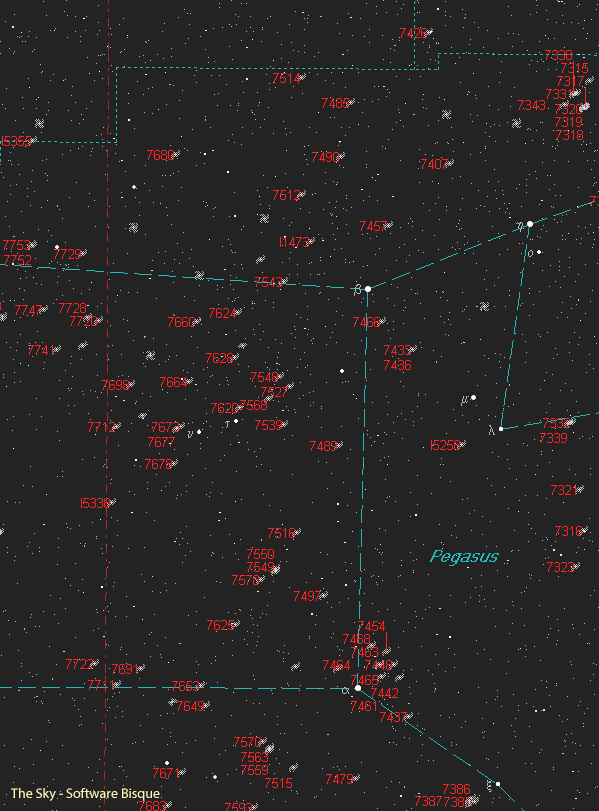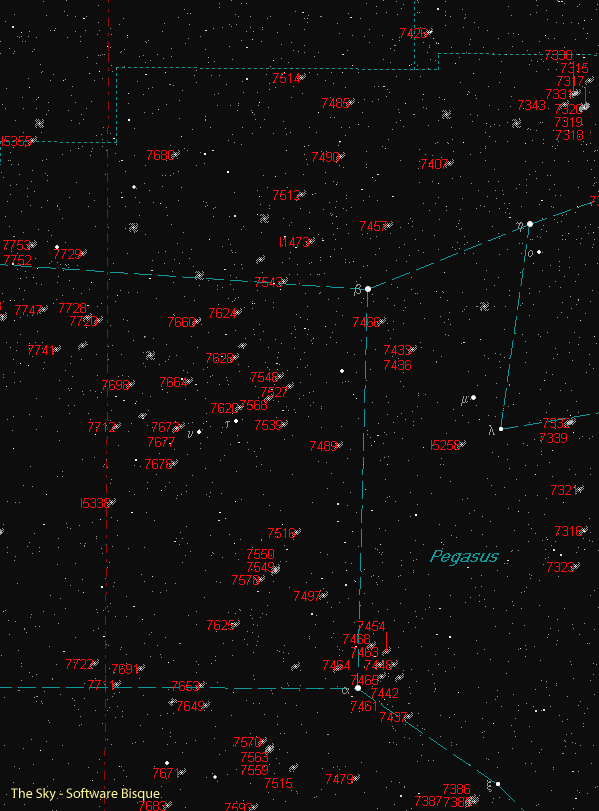Long-Awaited ISON
What has been the buzz in the astronomical community for the past year is now in the home stretch. Discovered on Sept 21, 2012, Comet ISON was first thought to be a daytime comet with an estimated magnitude -16, when it rounds the Sun at a very close distance on Nov 28. But recent observations now paint a slightly different picture. All comets are a bit of a mystery and seem to have a mind of their own - ISON is no different. Presently located near Mars in the morning sky, this first-time visitor to our solar system is still a couple of magnitudes fainter than what it should be at this time. ISON will still put on a great show and who knows, might still fracture and release new material thus becoming bright. Stay tuned.

And speaking about outbursts, Comet C/2012 X1 LINEAR has just done that. The comet was discovered on Dec 8, 2012, and was to only brighten to magnitude 12 in the first part of 2014. Well, stop the presses. Observations on Oct 20 show the comet brightened from magnitude +14 to +8.5 that is 100 times brighter. New estimates put the perihelion brightness around 6th or naked-eye visibility from a dark site. There is still time for it to brighten even further but the location is a problem. Linear is now in the constellation Coma Berenices low in the NW and might be a challenge being so low.
This month Pegasus the Winged Horse rides high in the night sky. During the first week of November, the Great Square crosses the meridian at around 9:30 local time. Like a giant baseball diamond in the sky, the square plays host to many single and groups of galaxies. For instance move to the upper left corner to Alpheratz which connects Andromeda and Pegasus. This B class star is still toasty hot at 13,000 K. Alpheratz is located 97 light-years distant and is a close binary to which they orbit every 96 days. These suns are so close, they can only be split by taking a spectra. About one and a third degrees to the 5 o’clock position from Alpheratz is the first object of the NGC catalogue NGC 1 is an elongated galaxy with a bright core. Nothing special but it is the first object on the list.

Another favourite is the Deer Lick Galaxy or NGC 7331. First, locate the star Matar (eta Pegasi) and move more than four degrees north till you find this fantastic object. Many other fainter and mote remote are with the area. NGC 7331 is about 45 million light-years away and is considered the twin of our Milky Way Galaxy. It's like looking in a mirror.
Now to find the illusive Stephan’s Quintet. You will need a moderate size scope of at least 12 inches and good dark skies, no Walmart parking lot for this one. From the Deer Lick, move down the moon’s width of 30 arc minutes. With averted vision, you should pick up some faintness of an image. The quints consist of a group of four remote galaxies most of which are estimated to be some 290 million light-years from us and are packed into an area only one-tenth that of the moon or three arc minutes.
A hybrid solar eclipse will take place on Nov 3 and will be seen over Africa and partially in Europe and South America. That is the good news; the bad news is it will almost be finished when the Sun rises in Eastern Canada. If the Sunday morning forecast seems promising, set the clock early. As always, proper eye protection is required when dealing with the brilliant Sun. Because of the geometry and Earth’s curvature, some places will see totally and others and Annual events.
Brilliant Venus did not put on a very good show and always stayed close to the horizon. As luck would have it, Venus is riding the ecliptic in the heart of Sagittarius now is at its lowest point. Venus also attains Greatest Eastern Elongation (GEE) of 47 degrees from the Sun on Nov 1 and will begin to slowly move towards the Sun. The planet is actually moving between our daytime star and Earth and will really start showing phase structure.
Well, it is time to change the clock in most time zones. For those that must change to standard time, we fall back one hour at 2 a.m. local time Sunday morning the 3rd which is also New Moon. Two weeks later on the 17th, the Leonid Meteor Shower will peak with a rate of only 15 meteors per hour. As if the rates were not bad enough, the Full Beaver Moon also slated for the same night might reduce these numbers even further.
Until next month, clear skies everyone.
